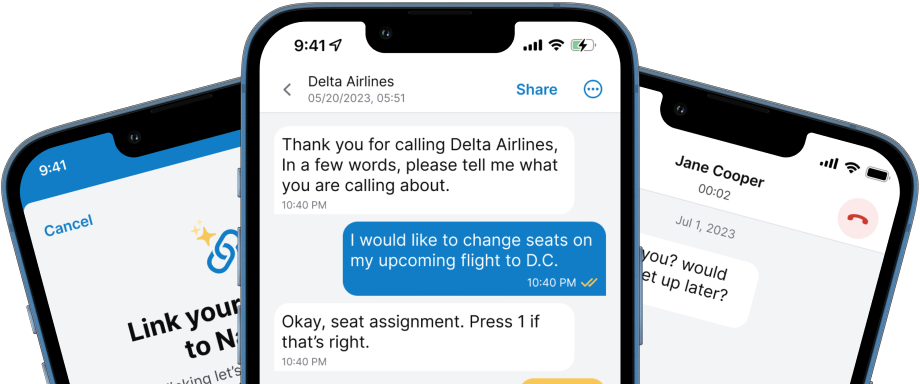A Brief Guide to Diversity Hiring for Deaf and Hard of Hearing People
Diversity hiring for deaf and hard-of-hearing people creates a more inclusive work environment. Click here to read more about it!

Introduction
Hiring deaf and hard of hearing people creates a well-rounded workforce. But oftentimes, employers forget to include this underrepresented group.
This guide will show you the benefits of recruiting and hiring deaf and hard of hearing candidates.
What is Diversity Hiring?
Diversity hiring means seeking job candidates who aren't typically chosen to fill certain roles (i.e., people with disabilities).
It means giving opportunities to people who are capable and want to work but they may have a disability that discourages potential employers.
Diversity hiring focuses on fairness and inclusion in the recruitment and hiring process.
Why is Diversity Hiring Important?
An inclusive workplace is crucial for nurturing innovation, fresh ideas, and a positive work environment. By including people with varied backgrounds, experiences, and abilities, companies can access varied perspectives and ideas.
The deaf or hard of hearing candidate brings a unique life experience, which can lead to better problem-solving and decision-making.
In this section, we explore how recruiting and hiring deaf and hard of hearing people can boost company success and morale.
- Creative problem solving: Deaf and hard of hearing people approach tasks and problems differently from hearing people due to their unique life experiences. This can result in fresh insights and innovative solutions not otherwise considered.
- Visual skills: Many deaf and hard of hearing individuals rely heavily on visual learning which creates an advantage when working on design and art.
- Enhanced communication: Having deaf and hard of hearing people on your team necessitates clear and direct communication which can strengthen employee relationships and support.
- Inclusivity: Hiring people who are deaf and hard of hearing shows your commitment to workplace inclusivity and equality. This can enhance a company’s reputation and display you as a desirable employer to future job candidates.
Beyond these benefits, it's important to stress that recruiting and hiring people who are deaf and hard of hearing is about providing opportunities to an underrepresented group that’s generally been ignored by companies. This goes for all people with disabilities.
By embracing this principle, companies can uncover different pathways to success.
Steps to Hiring People Who are Deaf and Hard of Hearing

Welcoming deaf and hard of hearing people to your team starts with a well-planned and accessible hiring process. This process should focus on respecting and accommodating these individuals' unique skills and needs.
By following this guidance, you will not only create a more supportive experience for applicants who are deaf or hard of hearing but you’ll also enhance the inclusivity of your workplace.
Educate Your Team
The first step is to educate your staff on how to communicate with deaf and hard of hearing candidates. Each deaf and hard of hearing person has their own communication method; some primarily speak and some primarily use sign language.
Ensure your team is knowledgeable about:
- The cultural and historical context of deafness
- Communication methods used in the deaf and hard of hearing community (e.g., sign language, lip-reading, and writing)
- Ways to promote and accommodate inclusivity
One idea is to encourage your employees to take a basic sign language course.
Rework Your Hiring Process
Next, make sure the hiring process is accessible for deaf and hard of hearing candidates. Here are some ways to do this.
- Make job advertisements easy to understand and see
- Post job advertisements where deaf and hard of hearing people will see them
- Help candidates in interviews by obtaining an interpreter or preparing a list of interview questions
- Teach your interviewers about disability etiquette geared toward people who are deaf and hard of hearing
Make The Workplace Comfortable
Once a deaf and hard of hearing person is hired, make sure they feel included and part of the team. You can do this by:
- Helping with communication like hiring an interpreter or writing important things down
- Using assistive technology like caption telephones or video calls with live captioning
- Making sure every meeting or event includes them
- Encouraging open and direct communication among all employees
Promote Continued Learning

Regularly assess your workplace to ensure it remains inclusive. Promote continued learning through:
- Giving your staff training on the needs of people with disabilities, with a focus on deaf and hard of hearing communities
- Checking in on your deaf and hard of hearing employees and making adjustments where needed
- Encouraging everyone to help and learn from each other
FAQs About Hiring People Who are Deaf and Hard of Hearing
Hiring people who are deaf or hard of hearing often brings up many questions related to communication, accommodations, and productivity. Seeking the answers to these questions can help break down barriers and biases to create a more inclusive workplace.
- How do deaf and hard of hearing employees communicate at work?
Deaf and hard of hearing individuals use different modes of communication, including sign language, lip reading, writing notes, hearing aids, and other assistive technology. - What are some reasonable accommodations for deaf and hard of hearing employees?
Some reasonable accommodations include providing sign language interpreters, using alert systems, offering Communication Access Realtime Translation (CART) services, and ensuring that meeting rooms are well lit. - Are accommodations for deaf and hard of hearing employees expensive?
Many accommodations for deaf and hard of hearing individuals are affordable or free. For example, companies can use email and instant messaging such as Slack. - Do deaf and hard of hearing employees need special training?
While deaf and hard of hearing employees may need some accommodations, they are as capable as other employees of performing standard job duties with relevant training or experience. Companies should offer training materials in an accessible format. - How can we ensure a positive and inclusive work environment for deaf and hard of hearing employees?
Creating an inclusive workplace involves fostering a culture of understanding, reinforcing a company policy of diversity and inclusion, providing regular training on deaf awareness, and nurturing clear and open communication.
By addressing these questions, you can create a more welcoming work environment for deaf and hard of hearing employees.
Conclusion
Hiring people who are deaf and hard of hearing can make your team more inclusive. All that’s required is an open mind and the desire to create an inclusive work environment.





